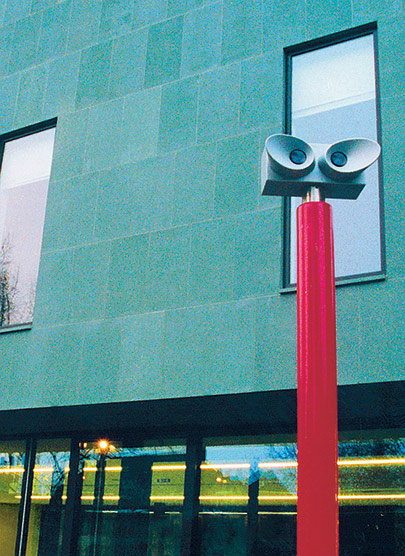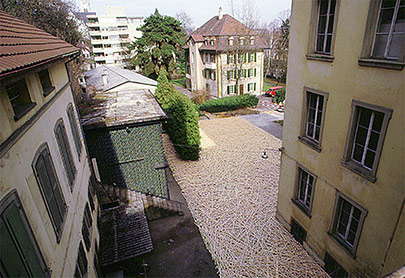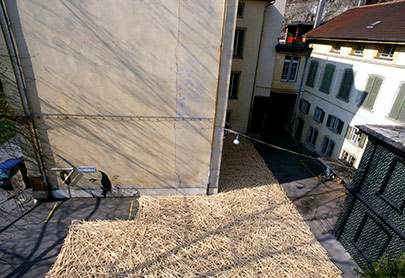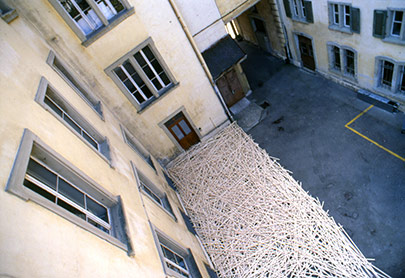 |
|
 |
|
 |
|
 |
|
 |
|
 |
|
 |
|
 |
|
Andreas Meier
Daniel Zimmermann chose the place well and found the appropriate moment to install one of his 'structural fields' in Biel. His interventions are essentially always about accentuating certain moments that stop time for a little while to render changes at this place visible.
He created such a visual sign of transition shortly before the excavation for the new Kunsthaus began and the new building fundamentally changed the site. Before the heavy machinery started excavating, he distributed 10.000 so-called plaster slats like Mikado sticks on the ground to create a 'structural field' where the new Kunsthaus will eventually stand. He documented his eight-day intervention, for which he sought no media attention, on film and in photographs. This ephemeral action is a visual sign, in itself inexplicable but presented in a well-reasoned context. The sign makes precise reference to the future building’s ground plan; the slats, positioned at all possible angles, are arranged by chance. Thus the structural field is simultaneously a sign of both order and chaos.
The second part of the work, the temporary or permanent installation of 3D-images in so-called panorama viewers after the building’s completion, will allow for a look at a vanished situation on location. Given the precise arrangement, the past is recognized as something physical and identifiable at the site itself.
Daniel Zimmermann's "Structural Field" belongs to a series of works that have addressed the context of places. Some time ago, for instance, Christoph Büchel, Liz Bachhuber and Käthe Walser dealt with the proximity to a nursing home. The building, wrapped by Christian Marclay with black music wallpaper for the exhibition "Nonchalance" ("The Morgue. Requiem"), can also be seen on the picture of Daniel Zimmermann's structural field. He considered the act of veiling the building as a sign of preparing for its upcoming disappearance. We like to see artists as alert contemporaries who register fast changes more consciously than a rationally planning individual usually would, and who invent something distinctive so we can perceive of changes more consciously.Andreas Meier Director Centre PasquArt